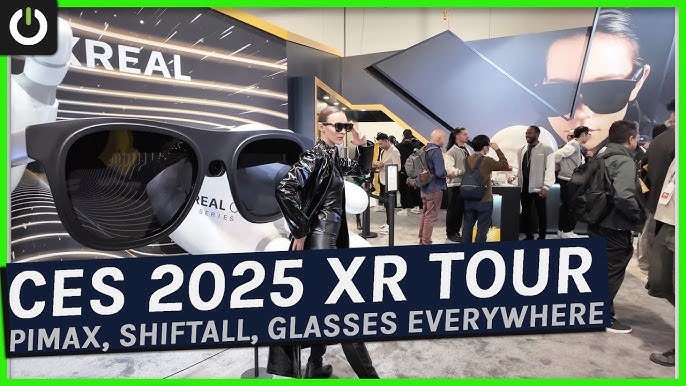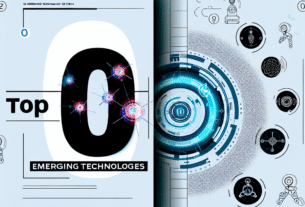The CES 2025 event was nothing short of a tech marvel, showcasing cutting-edge innovations in Augmented Reality (AR), Virtual Reality (VR), and Mixed Reality (MR). With technology giants and forward-thinking startups alike sharing their latest breakthroughs, the event proved why it remains the beacon of tech innovation every year. Below, we delve into the most noteworthy announcements and trends that emerged from this year’s event.
Revolutionary AR Devices and Applications
AR technology continues its climb, and at CES 2025, developers demonstrated how AR is reshaping industries from healthcare to gaming.
Healthcare Meets AR
- SmartVision’s AR Glasses: SmartVision introduced its new AR glasses designed for surgeons. These provide real-time overlays of critical patient data and 3D organ models directly into the surgeon’s field of vision, enhancing precision in complex procedures.
- MedAR’s Diagnostic App: MedAR showcased a breakthrough application that aids healthcare professionals in diagnosing and planning treatments using AR visualization of patient anatomy.
Transforming the Gaming Horizon
- Reality Forge’s AR Game Suite: Reality Forge presented an innovative suite of AR games that merge physical and digital realities. Players experience interactive challenges complete with lifelike graphics layered in real-world settings.
- PlayFusion’s Multiplayer AR Platform: Known for pushing boundaries, PlayFusion introduced their new multiplayer AR platform, enabling immersive, shared experiences that connect players worldwide in a transformed, augmented environment.
Groundbreaking VR Developments
Virtual Reality has seen explosive growth, and CES 2025 spotlighted transformative updates that promise richer, more immersive experiences.
Next-Level VR Headsets
- VisionTech’s Ultra HD VR Headset: VisionTech revealed its Ultra HD VR headset featuring a remarkably high resolution that reduces motion sickness and offers a more comfortable viewing experience.
- NanoPixel’s Compact VR Wear: With a sleek design, NanoPixel introduced a compact VR headset that promises the power of a full-sized VR system in a portable form. This makes it especially appealing to mobile gamers and travel enthusiasts.
Immersive VR Experiences
- Volcanic Rift’s Adventure Series: This VR start-up invited convention-goers to embark on epic virtual hiking adventures through simulated environments equipped with wind, temperature, and tactile feedback thanks to haptic technology innovations.
- Humanity’s Edge VR Learning Platform: This educational platform harnesses VR to teach complex concepts interactively, from historic events to complex scientific theories, catering to schools and universities worldwide.
MR Technology: Blending Realities in New Ways
Mixed Reality took center stage with innovations blurring the lines between physical and virtual worlds, opening vast potential applications.
Enterprise Solutions in MR
- WorkSpace’s MR Collaboration Tool: Making remote work more connected, WorkSpace unveiled its MR collaboration tools, enabling virtual meetings with realistic presence, where users can interact with 3D models and designs in a shared virtual environment.
- Industry 4.0 MR Interfaces: For industrial applications, the integration of MR interfaces allows engineers to manipulate digital twins of machinery in real-time, streamlining maintenance and design processes.
Education and Training with MR
- EduVerse’s Virtual Learning Environment: EduVerse launched a virtual learning environment harnessing MR capabilities to provide interactive lessons, where students can engage with 3D versions of historical figures, artifacts, and scientific models.
- TrainPro’s Immersive Safety Training: Focused on corporate safety culture, TrainPro introduced an MR-based training program that places employees in simulated emergency situations to practice response protocols using hyper-realistic scenarios.
Trends and Implications for the Future
CES 2025 demonstrated that the future of AR, VR, and MR lies in their integration and application across diverse sectors. Notably, these technologies are poised to redefine boundaries between physical and digital interactions.
- Interconnectivity: The seamless integration of these technologies offers comprehensive solutions across industries, from retail to education, pushing the envelope of user experience.
- Accessibility: As devices become more affordable and compact, the democratization of AR, VR, and MR technologies will allow wider accessibility, making niche experiences mainstream.
- Collaborative Platforms: With the rising potential of collaborative MR and VR platforms, we can anticipate more virtual spaces where users not only interact but also create and collaborate on projects worldwide.
As CES 2025 concludes, it is clear that innovations in AR, VR, and MR hold transformative potential. These groundbreaking technologies might soon become the cornerstone of daily life, work, and entertainment. As we march into the future, the creative possibilities seem boundless, heralding an exciting new era in technology.
“`




